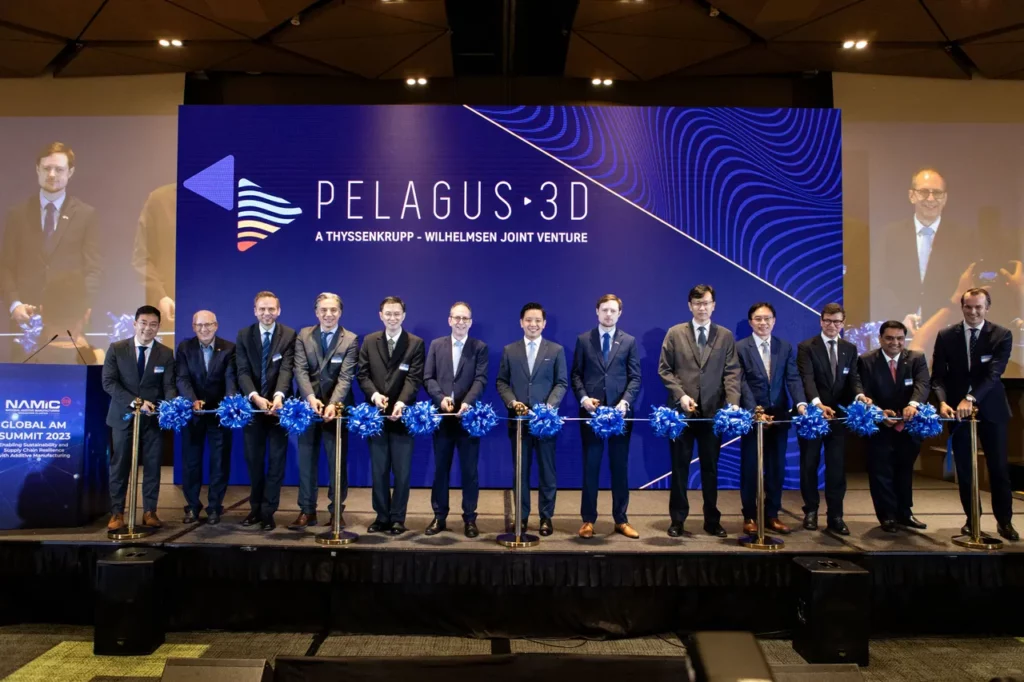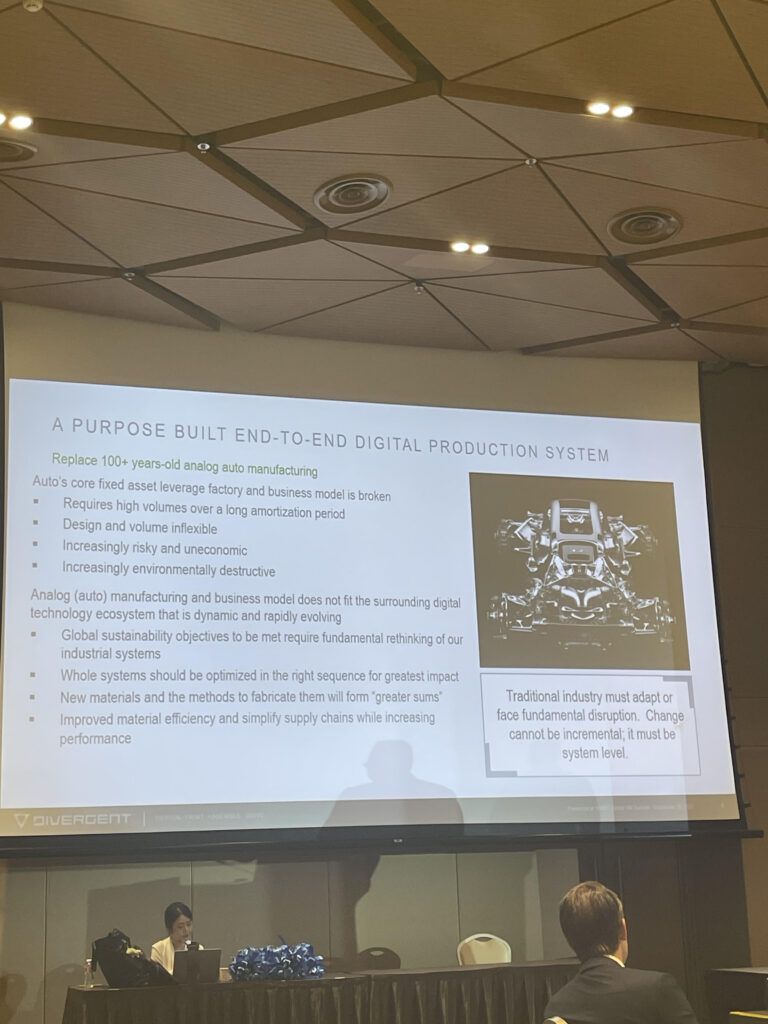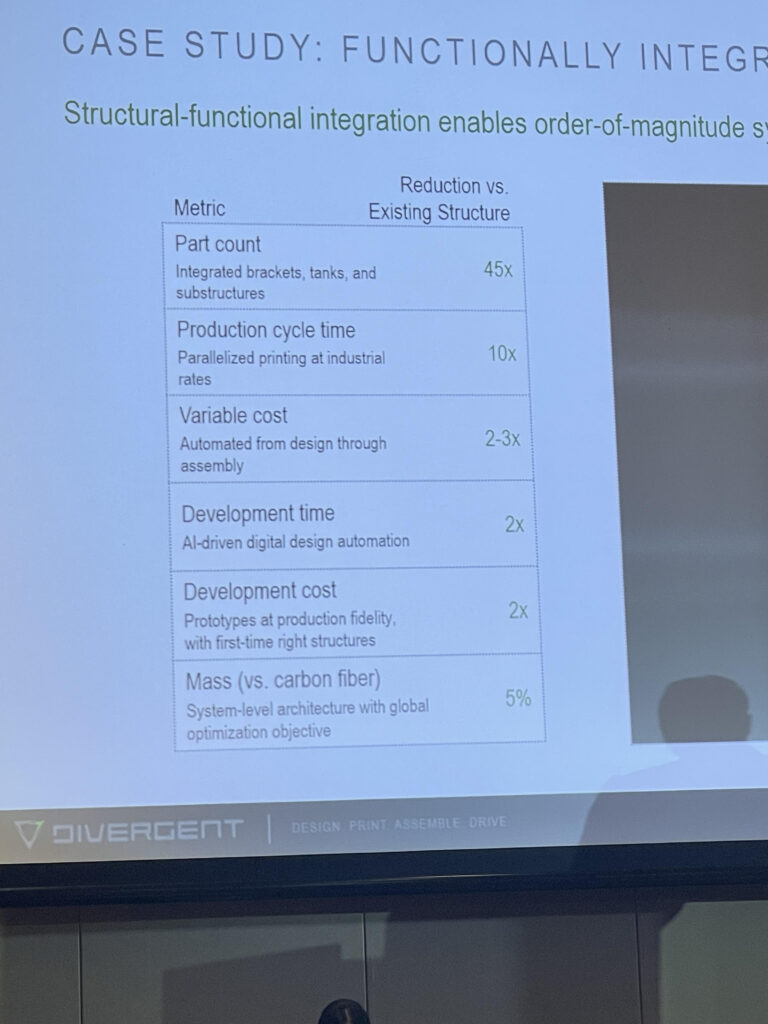The National Additive Manufacturing Innovation Cluster (NAMIC)’s Global AM Summit in Singapore attracts a diverse international audience, aiming to establish the city-state as a pivotal player in the additive manufacturing (AM) landscape. Building on its existing reputation as a hub for finance, tourism, transportation, and manufacturing, Singapore seeks to become an indispensable center for the 3D printing industry as well.
Singapore’s Role in 3D Printing
Kicking off the summit, Dr. Ho Chaw Sing, CEO of NAMIC, highlighted Singapore’s contributions to 3D printing technology. He emphasized the significance of manufacturing lightweight components on demand and reducing the carbon footprint of parts for global sustainability. In his view, 3D printing is instrumental not just in advancing Singapore, but in making the world a more sustainable place.
Following Dr. Ho Chaw Sing, Alvin Tan, Minister of State for the Ministry of Trade & Industry, took the stage. He discussed how 3D printing opens up three transformative avenues: supply chain resilience, sustainability, and innovation. Tan emphasized the particular relevance of resilience for Singapore, given its status as a globally connected city that is susceptible to external shocks.
He provided real-world examples to illustrate the impact of 3D printing on sustainability and innovation. Among the companies he highlighted was Osteopore, whose technology has benefited over 80,000 patients. Tan also noted the growing adoption of 3D printing among Singaporean businesses, stating that usage has increased by 30% over the past two years to include 200 companies.
In addition, he cited innovative local initiatives that leverage 3D printing for sustainability. These include transforming construction waste into park benches and employing copper 3D-printed marine ship propellers.
Another home-grown initiative was the the Additive Innovation Center. Based in Singapore, the center is collaborating with both local and international businesses to advance research, implementation, and industrialization in the field of AM. Among their current partners is AM materials firm Star3D, and the center aims to fast-track the adoption of 3D printing not just in Singapore, but globally.
Wilhelmsen and thyssenkrupp unveil Pelagus 3D
The event also included the unveiling of Pelagus 3D, a joint venture between marine resupply leader Wilhelmsen and steel behemoth thyssenkrupp. Both companies have been engaged in 3D printing activities in Singapore for several years, including the use of drones to deliver parts to off-shore facilities. Their new venture aims to produce 3D-printed parts both in Singapore and abroad. Pelagus 3D will feature a digital warehousing platform, allowing on-demand ordering of spare parts for the marine industry.

Pelagus 3D ribbon cutting ceremony at NAMIC Global AM Summit 2023. (f.l.t.r.):1. Kenlip Ong, Chief Executive Officer, Pelagus 3D; 3. Dr. Sebastian Smerat, Head of Customer Innovation of thyssenkrupp Materials Services and Member of the Board of Directors, Pelagus 3D; 4. Dr. Cetin Nazikkol, CEO Asia Pacific Africa and Chief Transformation Officer of thyssenkrupp and Member of the Board of Directors, Pelagus 3D; 6. H.E. Dr. Norbert Riedel, Ambassador, German Embassy Singapore; 7. Alvin Tan, Minister of State, Ministry of Trade and Industry; 11. Kjell Andre Engen, Chief Executive Officer & President, Wilhelmsen Ships Service and Member of the Board of Directors, Pelagus 3D; 12. Nakul Malhotra, Vice President, Emerging Opportunities Portfolio, Wilhelmsen Maritime Services and Member of the Board of Directors, Pelagus 3D; 13. Hakon Ellekjaer, Chief Commercial Officer, Pelagus 3D. Image courtesy of Pelagus 3D.
Given the extensive domain expertise and reach of both Wilhelmsen and thyssenkrupp, Pelagus 3D has the potential to become a significant player in the 3D printing arena. The marine maintenance, repair, and operations market is vast, offering the company an opportunity to quickly become an industry leader, even with a limited product range. Over time, the venture could leverage its considerable resources to expand into a substantial business. This is especially noteworthy given the current scarcity of both entrepreneurial and large-scale focus on 3D printing within the marine industry.
Divergent 3D
Following the Additive Innovation Center’s launch, Michael Kenworthy, CTO of AM Technologies at Divergent 3D, took the stage. Kenworthy expressed pride in his team’s ability to produce a road-legal, homologated vehicle with just 40 engineers. According to him, the firm’s system-level approach to 3D printing sets it apart, making the technology production-relevant.
Divergent 3D’s Czinger 21 hypercar exemplifies this approach, featuring 400 3D-printed aluminum parts. These sizable pieces are assembled from 30 to 40 individual components, which are adhesive-bonded in a robotic cell. Kenworthy revealed that the company has even developed its own topology optimization software. This software goes beyond design for AM (DfAM) to create structures inherently producible with 3D printing, optimized for robotic assembly into larger components.
He also discussed the firm’s innovative universal, fixture-less assembly process. Divergent’s production cells can seamlessly switch from manufacturing drone parts to car parts without requiring any changes or tooling. Speaking to the company’s productivity, Kenworthy noted that their printers produce between 1 to 3 kilograms of material per hour. The ultimate aim is to achieve a 10- to 15-fold cost reduction compared to traditional AM methods.
Kenworthy concluded by mentioning Divergent 3D’s collaboration with General Atomics on drones. The partnership has led to the integration of ducting, fuel tanks, and engine mounting into large, 3D-printed components. Remarkably, the company now 3D prints one drone per day, utilizing 24-hour printing cycles to produce around 30 kilograms of materials using their own powder. Despite my own initial skepticism, it’s clear that Divergent 3D is substantially shifting the manufacturing landscape. By integrating components such as ducting, they managed to reduce the part count by a staggering 45 times. Additionally, production speed increased tenfold, with a 50% reduction in both variable costs and development time and expenses.
Advances in Tissue Production
Switching gears, Eric Bennett, CEO of Frontier Bio, delved into the company’s use of electrospinning to create biological scaffolds. These scaffolds are seeded with human cells and incubated until they grow an extracellular matrix. The developed tissue can replace animal studies in medical testing. The team also employs gallium as a sacrificial mold to create blood vessels suitable for testing.
Professor Huang Dejian, Co-Founder of Kosmode Health, then spoke about the firm’s innovative approach to making edible scaffolds from prolamins, which are found in wheat and other seeds. Dr. Dhiraj Singh, Head of R&D at Umami Bioworks, discussed the unsustainable growth in seafood demand and the resulting depletion of fish stocks.
To wrap up the session, Arik Kaufman, CEO of Steakholder Foods, introduced his company’s 3D printing solution aimed at increasing food production efficiency. Kaufman envisions a future where slaughterhouses resemble Apple Stores in their design and operation, eliminating cruelty from the equation.
Construction 3D Printing
The next segment focused on sustainable urban solutions, exploring the intersection of 3D printing and sustainability. We delved into what’s both possible and profitable for companies, as well as ways to enhance urban sustainability. Arthur Huang, CEO of MINIWIZ, discussed transforming waste into new objects—turning CDs into building facades and milk cartons into store interiors.
Following Huang, Shaun Wu from Witteveen+Bos highlighted the firm’s 3D printing projects in the construction of bridges, houses, and other structures. He emphasized the benefits: customizable designs, greater design freedom, streamlined workflows, and reduced labor and material consumption. Simon Klint Bergh, Head of APAC for machinery company COBOD, took the stage next, and then Pan Yi Cheng of Type0 Architecture spoke. Cheng focused on the architect’s role in fostering a more sustainable planet.
Overall, I found the day incredibly insightful. NAMIC’s Global AM Summit never disappoints; it’s an event that goes beyond mere technology and new materials. Instead, it connects 3D printing to broader global and national issues. I always walk away with a fresh perspective on our industry and its potential impact on the world.
Subscribe to Our Email Newsletter
Stay up-to-date on all the latest news from the 3D printing industry and receive information and offers from third party vendors.
You May Also Like
Further Understanding of 3D Printing Design at ADDITIV Design World
ADDITIV is back once again! This time, the virtual platform for additive manufacturing will be holding the first-ever edition of ADDITIV Design World on May 23rd from 9:00 AM –...
3D Printer Maker EVO-tech Reborn as NEVO3D — Once More With Feeling
EVO-tech was a 3D printing service and original equipment manufacturer established in 2013 and based in Schörfling am Attersee, Austria. The company produced high-quality material extrusion systems featuring linear bearings,...
3D Systems Brings 3D Printed PEEK Cranial Implant to the U.S. with FDA Clearance
For more than 10 years, 3D Systems (NYSE:DDD) has worked hand-in-hand with surgeons to plan over 150,000 patient-specific cases, and develop more than two million instruments and implants from its...
CDFAM Returns to Berlin for Second Annual Symposium
The second CDFAM Computational Design Symposium is scheduled for May 7-8, 2024, in Berlin, and will convene leading experts in computational design across all scales. Building upon the first event...


































